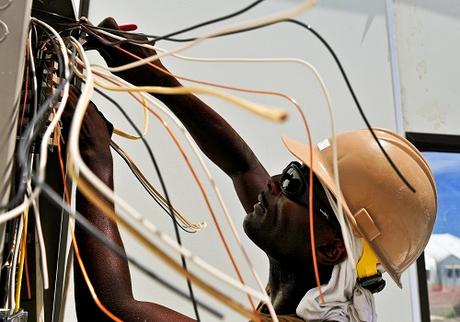Handling home repairs yourself can save you hundreds of dollars. However, safety should always come first. You should feel confident in your ability to do the job right. The first step is learning more about how to correctly handle electrical repairs at home. Connect Electric wants to share this list of 10 tips to help you get started on your next repair or renovation project.
Turn Off All Power First
Shut off power to the area you are working in. It’s best to switch off the main breaker. Trying to work with live wires is extremely dangerous and could end in injury or a house fire.
Test Devices and Wires Before Handling
Even if you turned the power off, you should test to make sure wires are not still connected to a power source. Sometimes, shutting them off isn’t enough. Testers are available so you can do this safely.

Circuit Breaker Labels Aren’t Always Accurate
Remember that labels on circuit breakers aren’t always accurate. This is especially true in older homes or homes that have had multiple owners. This is another situation where testing is essential to verify that the breaker is off.
Find the Correct Amperage
All wiring and devices have an amp rating. This shows the maximum electrical current it can safely handle. Standard household circuits are usually rated for 15 or 20 amps. Large appliance circuits are usually 30, 40, or 50 amps. Make sure you use the correct amperage based on the needs of the project.
Keep Wire Connections Tight
Tight connections are necessary to allow electricity to flow along wires. Loose connections can restrict flow or create heat and friction as power jumps from one conductor to another. This is a serious fire hazard.
Use GFCI Outlets in Areas with Water
If you are installing outlets in a bathroom, kitchen, laundry room, or other space that has a water source in it, use GFCI outlets. GFCI, or Ground Fault Circuit Interrupter, outlets cut power when moisture is present.
Be Mindful of Grounding and Polarization
Polarization keeps current in the right place, letting it travel along hot wires and return along neutral wires. Grounding is also necessary to supply a safe path in case of stray current. The component you are installing should come with a diagram that shows how to connect each wire.
Have a Fire Extinguisher Ready
You should never throw water on an electrical fire. Instead, have a fire-retardant chemical fire extinguisher available near your work area. Also, make sure you know how to properly use it in case of an emergency.
Touch Outlets to Check for Warmth
If you have old or malfunctioning outlets, or if you’re installing new outlets, check them for warmth. If they are warm or hot to the touch, this is a big red flag. It could mean that the load is too high, a wire is melting, or wiring is loose. Cut power and repair the problem immediately or contact an electrician.
Replace Old Appliances
You may be tempted to repair the wiring in old appliances instead of spending the money to replace them. This is not advised. Appliances have a lifespan, once they exceed that, they could become a hazard. Newer models will come with more safety features and are usually more efficient.
Use caution when doing electrical work on your home. If you’re from Australia feel free to contact us at www.connectelectric.com.au. Remember to talk to your local electrician if you have questions or run into problems that require an expert solution.
